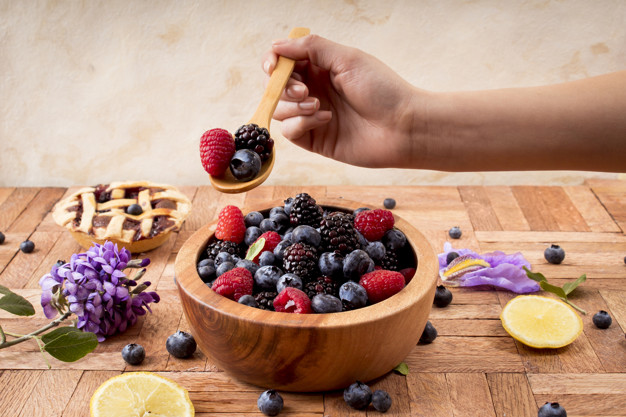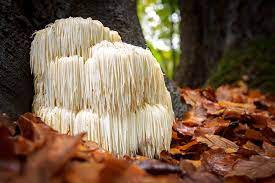
04 Jun What Is Foraging, and How Do You Get Started?
If you’re interested in having a more sustainable lifestyle, foraging could become your new favorite hobby. This practice may help you try new and interesting foods, improve your nutrient intake, and even lower your carbon footprint.
That said, it’s essential to educate yourself on foraging safety before you get started.
I first became interested in foraging after learning more about edible wild mushrooms. The photo below shows me with a lion’s mane mushroom my husband and I found while hiking in Maine.
This article explains foraging basics, lists commonly foraged foods, and provides tips on how to start foraging in both rural and urban environments.

What is foraging?
In ancient times, humans acquired food either by hunting animals and fish or gathering wild edibles like plants, berries, and seeds.
The way we obtain food nowadays is very different. In industrialized countries like the United States, most people get their food from grocery stores or food delivery services.
Other than placing it in your grocery cart, preparing it, and eating it, you may have little involvement or personal connection with the food you eat.
However, there’s a burgeoning environmental movement that emphasizes growing your own food and supporting local agriculture. Foraging, or searching for wild food, has surged in popularity as well, especially among those interested in eating more sustainably.
Although you may think that foraging can only take place in wild areas like forests, it’s possible in urban environments, such as cities, as well.
That’s because even the most urban settings have green spaces, including parks and yards, where wild edibles can grow. In rural places and wilderness areas, edible plants like mushrooms, berries, and greens abound.
You may be interested in foraging for a variety of reasons, including recreation, feeling closer to nature, or the health benefits associated with eating locally foraged foods
What foods can you find while foraging?
Foragers often seek any number of wild edibles. Some concentrate on finding specific foods like mushrooms, while others collect any wild edibles available in their area.
Here are some of the most common foods targeted by foraging enthusiasts.
Greens
Edible greens are abundant in the wild and may even grow in your own backyard. In fact, what some people consider weeds are wild greens that you can incorporate into delicious dishes.
Wild lettuce, mallow, dandelion greens, sweet fennel, plantain, purslane, lamb’s quarters, and chickweed are just a few wild greens that you can eat.
Notably, wild greens are rich in many nutrients.
One study that tested wild greens foraged in California found that 1 cup of dock (Rumex crispus) exceeded the recommended adult intake for vitamin A, while 1 cup of mallow (Malva sylvestris) packed 27% more calcium than the same amount of whole milk.
The study also showed that, with the exception of vitamin C, the wild greens tested were generally more nutritious than kale.
Berries and fruits
You can find berries and other wild fruits like pawpaws and grapes in many areas of the United States.
Blackberries, raspberries, blueberries, cloudberries, cranberries, bilberries, currants, lingonberries, bearberries, and crowberries are just some of the berries that grow in the wild.
Studies note that wild berries and other forageable wild fruits are exceptionally nutritious, containing a variety of anti-inflammatory compounds and antioxidants that may benefit your health.
Other commonly foraged foods
Although mushrooms, berries, other fruits, and greens are among the most popular foraged foods, you can gather and eat a variety of other wild edibles. Roots, nuts, seeds, and even shellfish are forageable in the wild, depending on where you live.
Shellfish like clams and mussels are an excellent source of many nutrients and can be collected in certain coastal areas.
What’s more, many foragers collect wild onions, as well as the roots of burdock, chicory, and dandelion. These nutrient-rich roots can be added to a variety of dishes.
Some foragers also love to collect nuts and seeds like walnuts, pecans, acorns, and pine nuts.

No Comments